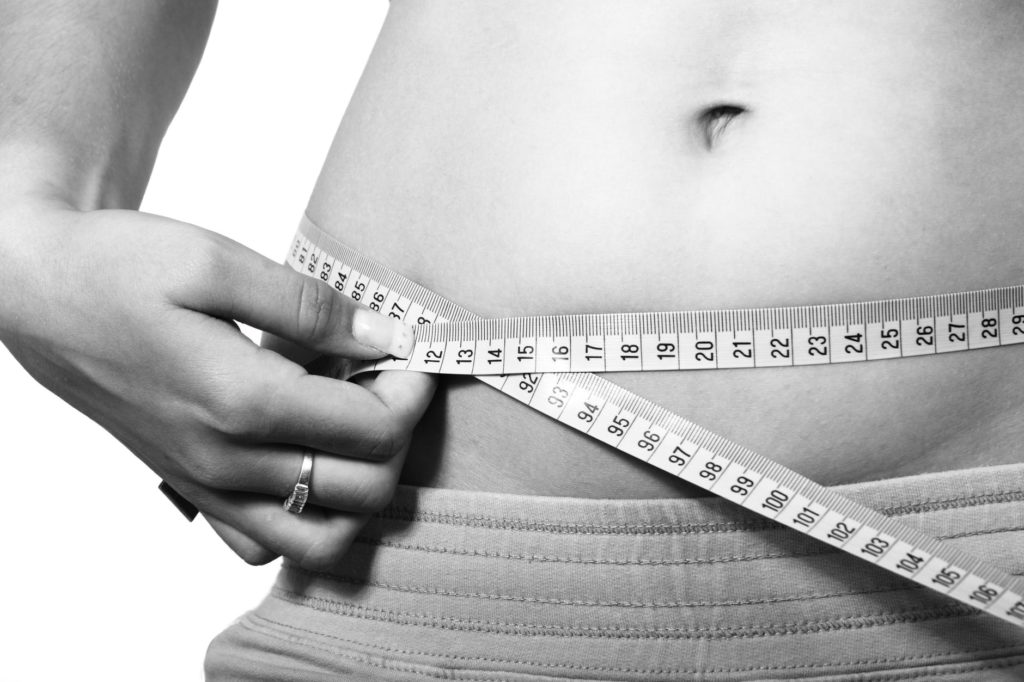With the vast amount of B.S. information coming from TV, celebrity magazines or social media, no wonder there’s so much confusion when it comes to health and fitness. Although having access to information is awesome, too much of it can be overwhelming and cause further lack of understanding. In this article I will debunk eight of the most popular fitness myths that still exist when it comes to training and weight loss.

-
You must stretch before a work out
Truth: Stretching causes tendons to loosen up resulting in less stability and muscles having less force to move weights.
A study published in Journal of Strength and Conditioning Research found that the participants felt 23 percent less stable and 8 percent strength decrease during an exercise when they performed static stretching prior to lifting. (1)
Leave the stretching for yoga classes and incorporate a dynamic warm-up before training instead.

-
No Pain, No Gain
Truth: Indeed muscle tension and muscle damage is required to achieve results. However, over-doing it to the point where it hinders recovery can be counter-productive.
According to Edward G. McFarland, M.D. and Andrew Cosgarea, M.D., fatigue after a good, strenuous workout is a sign that the exercise is pushing the limits of the athlete’s physiology, but it should not be too excessive. If it lasts days, it means the individual’s physiology has been excessively challenged, and this means that the muscles and the energy stores are not being effectively replenished. (2)

-
You can spot reduce fat
Truth: Even though it sounds logical that doing bicep curls may make your arms leaner, the body does not work in that manner. The order that your body decides to strip off (or store) fat during your fat loss journey is largely based on genetics. We can lose overall body fat, but fat spot reduction is yet another fitness myth.
A study done in 2011 found fat spot-reduction to be false. They concluded that an abdominal exercise program did not achieve greater abdominal fat loss than a non-exercising control group consuming the same amount of calories in the diet. (3)
Another study done in 2007 by Kostek et al. used a similar design and did not find any greater fat loss in the strength trained arm than the non-exercised arm with MRI measurements. (4)
-
Lifting heavy weights makes you “bulky”
Truth: Women especially have a fear of weights with the belief that it will make them too “bulky”.
In reality, resistance training using moderate to heavy weights improves hormonal response, burns more body fat and helps you achieve a more aesthetic, fit and ‘toned’ body.
This is a huge fitness myth. Weights are your friend, not foe.

-
Working out makes you hungry
Truth: Actually working out can reduce cravings and overall appetite. Working out in fact, will often lead you to make healthier food choices.
A study published in the International Journal of Obesity suggests that high-intensity training had a lowering effect on appetite as well as cravings. (5)
So next time you’re about to eat that chocolate cookie out of boredom, hit the gym instead.
-
Eating too much protein is bad for your kidneys
Truth: Eating a high-protein diet has no negative effects on health. In fact, eating more protein can positively affect your body-composition by increasing your lean tissue (using resistance training as well) and helping you lose body fat.
A study done by Nova Southeastern University in 2016 tested the long-term effects of high-protein intake on kidney function. Results showed no adverse effects of consuming a high-protein diet (four times the recommended daily allowance) on the kidneys, liver or lipids. In addition, despite the total increase in energy intake during the high protein phase, subjects did not experience an increase in fat mass. (6)
-
You have 1 hour to drink your protein post-training.
Truth: Truth is that the “anabolic” window can last up 4-6 hours after training. That means you don’t have to rush to your locker or run home to ingest the 30-40grams of protein right after training.
But is there a good reason to hold-off the post-workout meal? Most often, no.
Despite the fact that the anabolic window does not end within 30 minutes of training, fueling your body as soon as possible after an intense training session does provide quicker recovery benefits.
However, if one day you forgot your shake at home or are busy doing errands, don’t stress it. Just have have a good protein and carb meal a little later.
-
As long as you work out, you’ll lose weight
Truth: Working out alone may not be enough to achieve the weight loss results you are looking for.
Although, exercise is a major part of losing body fat, working out alone will not yield the weight loss results most people are hoping for. Studies show that it is extremely difficult to burn enough calories through exercise alone in order to create the caloric deficit required for weight loss. (7)
Working out must be coupled with a calorie restricting diet for best weight loss results.


